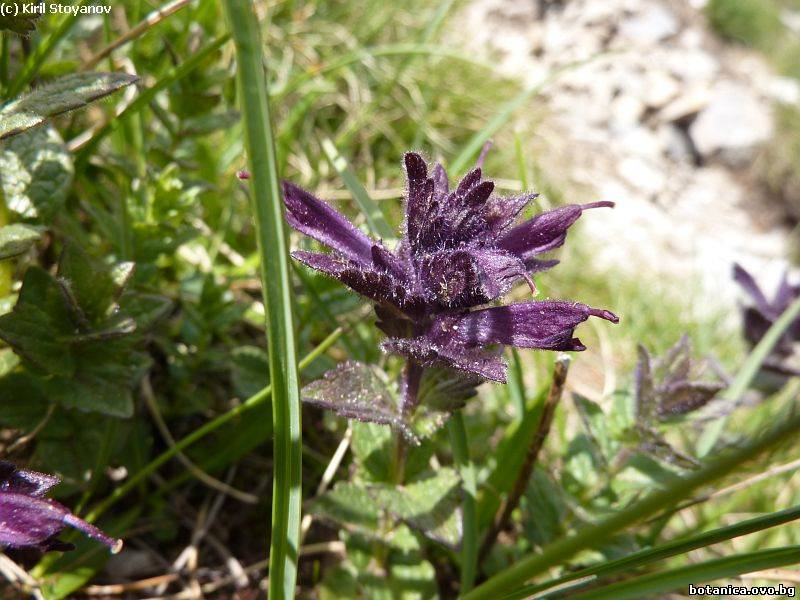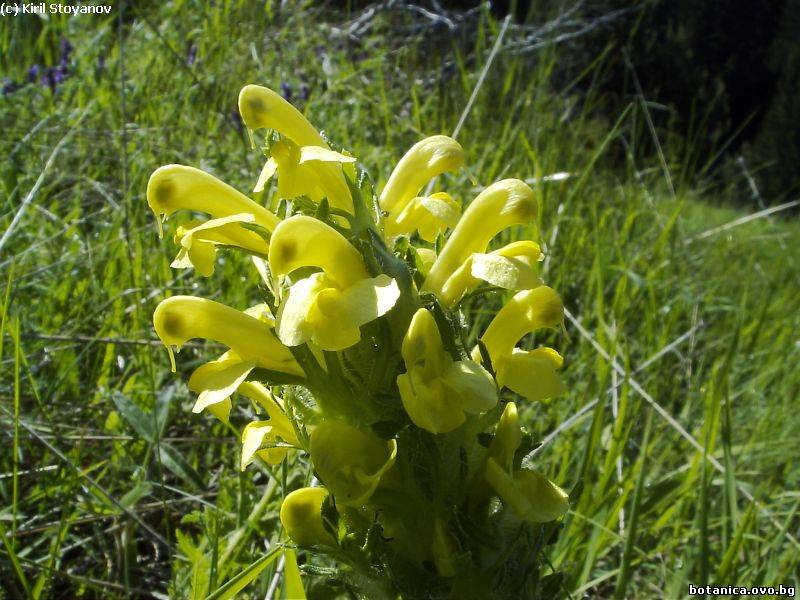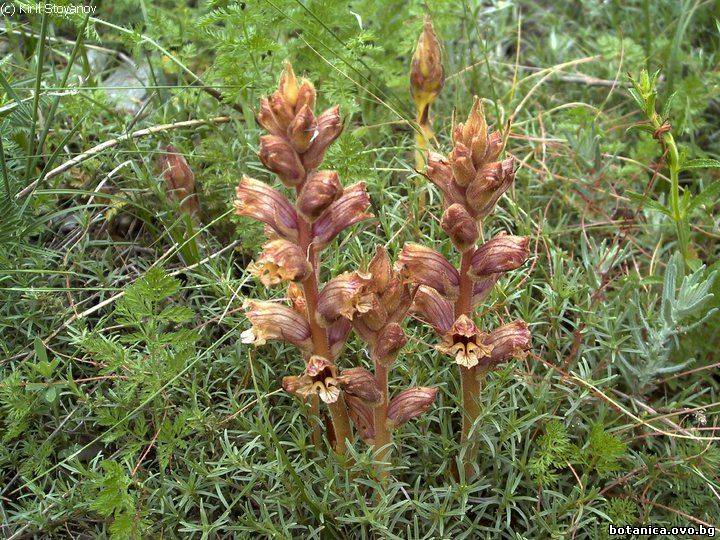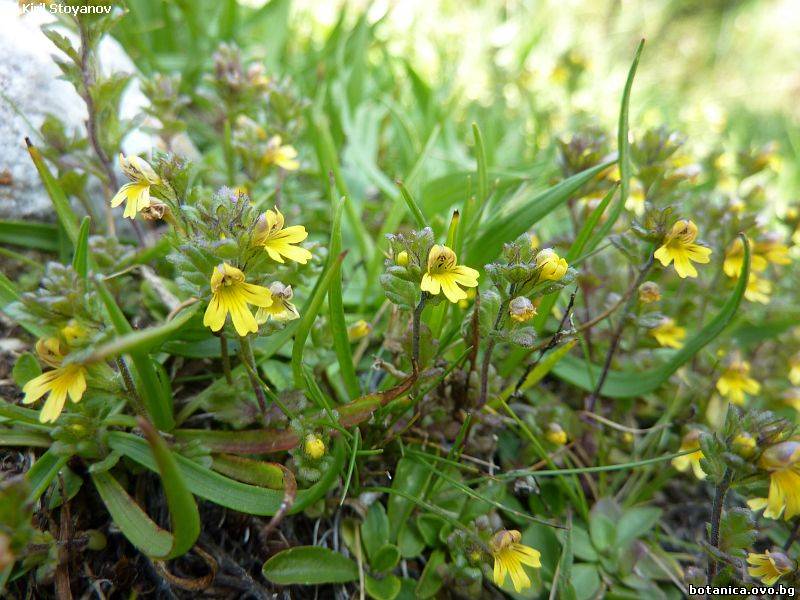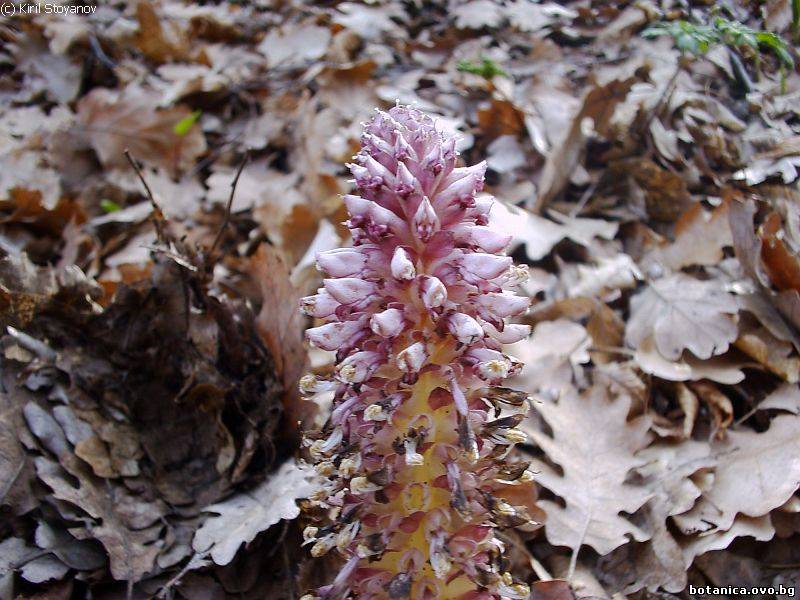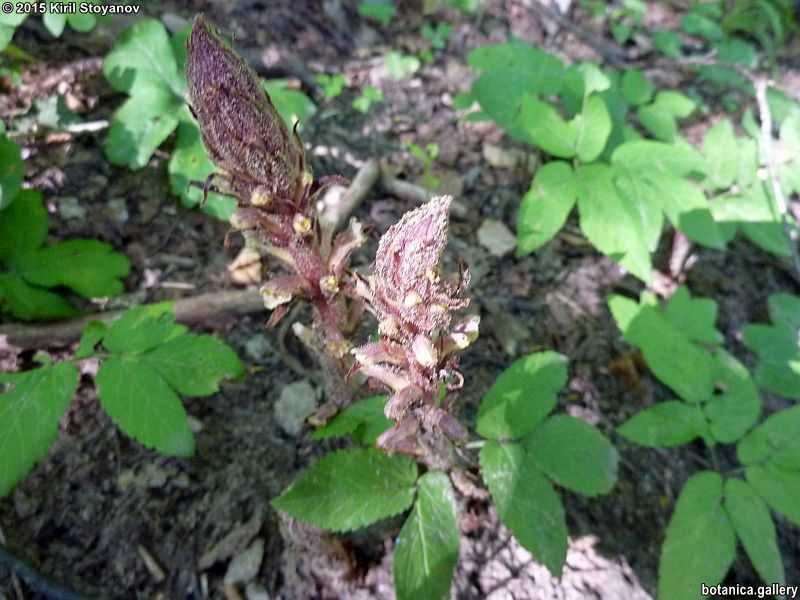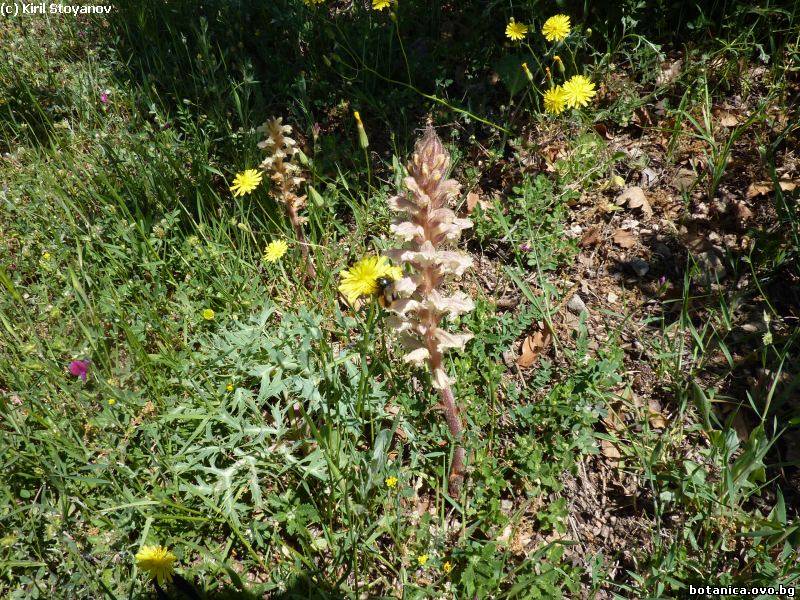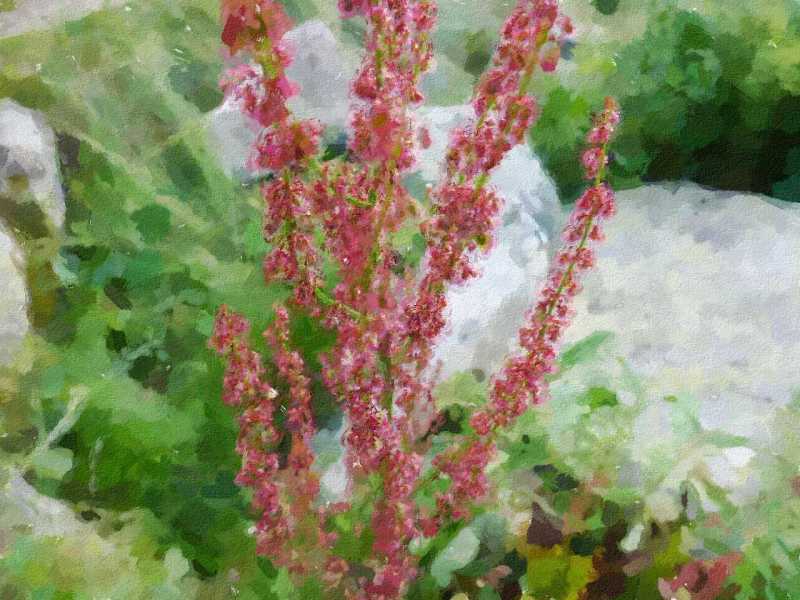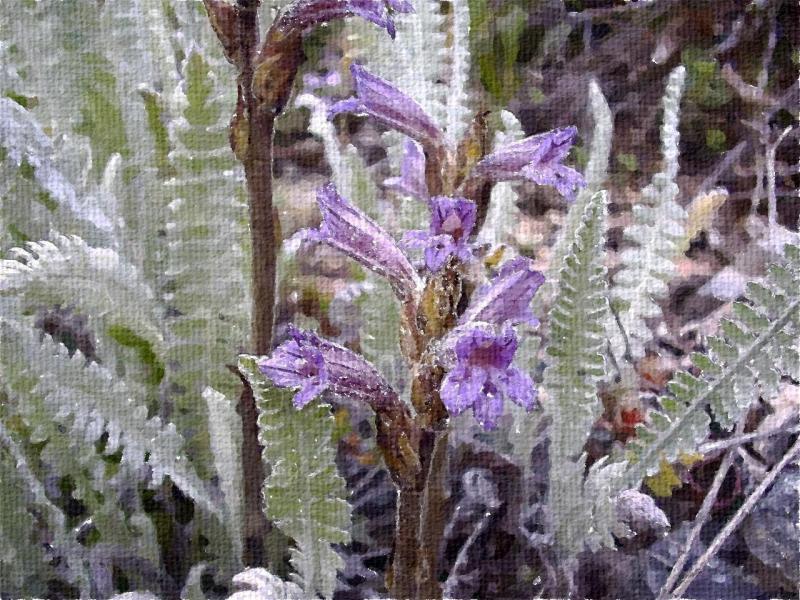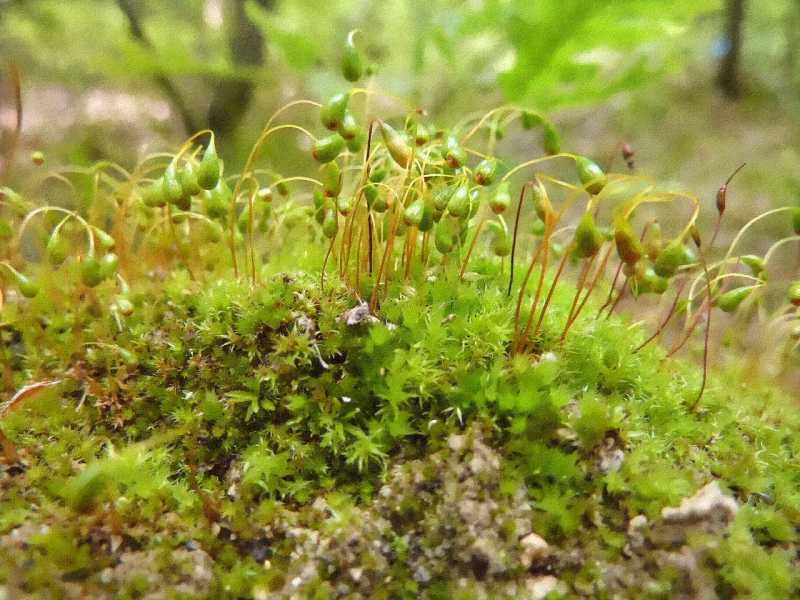PDFGevezova M., Dekalska T., Stoyanov K., Hristeva Ts., Kostov K., Batchvarova R. and Denev I. 2012.
Recent advances in Broomrapes research.
J. Biosci. Biotech. 1(2): 91-105
Abstract:
Orobanchaceae (broomrapes) is a morphologically diverse family of predominantly herbaceous, parasitic plants. The majority of species are facultative or obligate root parasites that subsist on broad-leaf plants, thereby depleting them of nutrients, minerals and water. The taxonomy status of the family Orobanchaceae among other flowering plants is often subject of debate. They possess only a few morphological features suitable for taxonomy purposes and yet even they are quite changeable. The variability within the species is too high and hampers the attempts to create proper determination keys. During last two decades several molecular markers were used for reevaluate taxonomy, biodiversity and phylogenetic relationships within the family. Recent investigations supported by molecular taxonomy analyses have resulted in redefinition of Orobanchaceae family. According to this classification Orobanchaceae consists of 89 genera, containing 2061 species. On the Balkans the family Orobanchaceae is represented by 3 genera: Orobanche includes 25 species; Phelipanche comprises of 9 species and some putative hybrids; Diphelypaea occurs with single species, Diphelypaea boissieri, in Macedonia and Greece. Only a few recent studies based on modern methods took place during last decade. Their findings confirmed differences between Phelipanche and Orobanche genera, but raised new question about their internal structure. Several broomrape species parasitize important crops. They are widely spread in Bulgaria, Southern Europe, Russia, Middle East and Northern Africa. They cause losses in crop productivity estimated at hundreds of millions of dollars annually than affect the livelihoods of 100 million farmers. A wide variety of approaches have been explored to control broomrapes, but none have been found to be sufficiently effective and affordable. The new findings about their life cycle and the recent genomic project focused on sequences of Ph. aegyptiaca genome open new perspectives for management of the harmful broomrape species and for understanding of their biology and evolution as well.
Key words: Broomrapes, ecosystem management, germination stimulants, haustorium, molecular taxonomy, Orobanchaceae
Acknowledgements
Parts of the described studies were funded by the National Science fund of Bulgaria grant IFS-B-606 – module 1, grant DO 02-204, grant DТК 02/40; by NATO grant CLG 983884 and SEE.ERA-Net Plus grant ERA117.
[цитирано в | cited in]:
- Abdalla M.M.F., Heba A.M.A. Saleh & Khater M.A. 2020. Detection of genetic variations in Orobanche crenata using inter simple sequence repeat (ISSR) markers. Bull Natl Res Cent 44, 139. https://doi.org/10.1186/s42269-020-00390-0
- Abdalla M.M.F., Schafik M.M., Attia S.M. & Ghannam H.A. 2016. Molecular Characterization of Orobanche crenata in Egypt Using ISSR Markers and Its Relation to Faba Bean Breeding. Biotechnology Journal International 16(3): 1-11. DOI: 10.9734/BJI/2016/27216
- Abebe T., Beyene H. & Nega Y. 2013. Distribution and economic importance of Broomrape (Orobanche crenata) in food legumes production of South Tigray, Ethiopia. ESci. J. Crop. Prod. 02(03): 101-106.
- Ajithkumar T.G., Mathew L. & Kumar S. 2021. Assessment of polymorphism using RAPD in the generalized hemiparasitic plant Helicanthes elasticus (Desv.)Danser collected from six different hosts. Research Journal of Biotechnology, 16(7): 141-149. Scopus
- Al-Asadi W.M. & Al-Mayah A.A. 2016. Three New Records of Orobanche (Orobanchaceae) to the Flora of Iraq. American Scientific Research Journal for Engineering, Technology, and Sciences (ASRJETS). 22(1): 63-50.
- Albayrak H,, Isik D., Arslan M. 2024. Response of Branched Broomrape (Phelipanche ramosa (L.) Pomel) to Amino Acid Treatments, 26 February 2024, PREPRINT (Version 1) available at Research Square [https://doi.org/10.21203/rs.3.rs-3975075/v1]
- Baghyalakshmi K., Sarala K., Prabhakararao K. and Damodar Reddy D. 2019. Orobanche menace in crop plants: Host resistance as a potential tool to control. Journal of Pharmacognosy and Phytochemistry, SP2: 93-102. www.phytojournal.com
- Bani A., Pavlova D., Benizri E., Shallari S., Miho L., Meco M., Shahu E., Reeves R., Echevarria G. 2018. Relationship between the Ni hyperaccumulator Alyssum murale and the parasitic plant Orobanche nowackiana from serpentines in Albania. Ecological Research, 1-11. Special Feature Ultramafic Ecosystems: Proceedings of the 9th International Conference on Serpentine Ecology. https://doi.org/10.1007/s11284-018-1593-1 Scopus
- Clapco S. & Duca M. 2020. Lupoaia Florii-Soarelui (Orobanche cumana Wallr.). Universitatea de Stat „Dimitrie Cantemir”. – Chișinău. ISBN 978-9975-89-183-7
- Coutinho A.P., Cardoso Da Silveira P., Albuquerque J.I., Pujadas-Salvà A.J. 2018 Contribution to the knowledge of the pollen morphology in the tribe Orobancheae Lam. & DC. (Orobanchaceae), Grana, DOI: 10.1080/00173134.2018.1519032 Scopus
- Duca M. & Boicu A. 2017. Morphological Diversity of Seeds in O. cumana Accessions from Republic of Moldova. Helia. https://doi.org/10.1515/helia-2017-0005 Scopus
- Duca M., Port A., Mutu A. & Clapco S. 2020. Variabilitaeta genetica a unor populatii de Orobanche cumana Wallr. din Republica Moldova. Buletinul Academiei de Ştiinţe a Moldove. Genetica, Biologia moleculară şi Ameliorarea. 1(340): 81-94.
- Dovala A.C. 2014. Identificação do género Striga em Angola Combate de Striga asiatica em milho. Capítulo III. Identificação e distribução do género Striga em Angola. Tese Apresentada Neste Instituto Para A Obtenção Do Grau De Doutor Em Engenharia Agronómica. Universidade de Lisboa.
- El-Taher, A. M., & Mohamed, F. S. 2022. Morphological studies on some Orobanche L. species in Egypt. International Journal of Health Sciences, 6(S6), 9996–10011. https://doi.org/10.53730/ijhs.v6nS6.12568
- Fernandez-Martinez J.M., Perez-Vich B., Velasco L. 2015. Sunflower Broomrape (Orobance cumana Wallr.) In: Martínez-Force E., Dunford N.T., Salas J.J. (eds.) Sunflower: Chemistry, Production, Processing, and Utilization. Elsevier. 129-156.
- Genovese C., D’Angeli F., Attanasio F., Caserta G., Scarpaci K.S. & Nicolosi A. 2020. Phytochemical composition and biological activities of Orobanche crenata Forssk.: a review. Natural Product Research. DOI: 10.1080/14786419.2020.1739042 Scopus
- Hosseini Faradonbeh N., Izadi Darbandi E., Karimmojeni H., Nezami A. & Gonzalez-Andujar J.L. 2022. Investigating the physiological and morphological responses of Cucumis sativus to Phelipanche aegyptiaca parasitism. J. Crop Prot. 2022, 11 (3): 345-359. Scopus
- Hu L., Wang, J, Yang C., Islam F., Bouwmeester H.J., Muños S., Zhou W. 2020. The effect of virulence and resistance mechanisms on the interactions between parasitic plants and their hosts. International Journal of Molecular Sciences, 21(23): 1-27. Scopus
- Kalariya K.A., Shahi D., Saran P.L. & al. 2023. Effects of nodding broomrape parasitism on growth, physio-biochemical changes and yield loss of Withania somnifera (Linn.) Dunal plant. Vegetos. https://doi.org/10.1007/s42535-023-00628-y Scopus
- Kaya Y. 2023. Recent developments in broomrape in sunflower in the world. 5th International Symposium on Broomrape in Sunflower 1-3 November 2023, Antalya, Turkey, 73-88.
- Kumari S., Joshi R., Kesh Meena R., Mishra P. 2024. Occurrence and life cycle of broomrape (Phelipanche aegyptiaca Pers.) on mustard (Brassica campestris L.) in Northeastern regions of Rajasthan. Journal of Applied Biology & Biotechnology 13(1), pp. 169-176. DOI: 10.7324/JABB.2024.159154Scopus
- 이웅 ·정금선 ·최경 ·김진석 ·조성호 ·박재홍 2016 울릉도, 독도 초종용에서 형태 변이와 지리적 분포 양상. [Lee W., Jeong K.S., Choi K., Kim J.S., Cho S.H. & Pak J-H. 2016. Morphological variation and aspects of the geographic distribution of Orobanche coerulescens Stephan ex Willd. (Orobanchaceae) on Ulleung-do and Dok-do Islands.] Korean J. Pl. Taxon. 46(4): 405−412. https://doi.org/10.11110/kjpt.2016.46.4.405
- Nabil E.M., Abo Zeid E.M., Al-Gendy A.A., Al-Dougdoug W.A., Attia R.A. 2024. Botanical Study of Orobanche minor Smith (Orobanchaceae). Zagazig Journal of Pharmaceutical Sciences, 33(1): 63-76. DOI: 10.21608/ZJPS.2024.286503.1070
- Negewo T, Tessema T., Tana T. & Ahmed S. 2020. Farmers’ Knowledge and Perception of Crenate Broomrape (Orobanche crenata) and Management Practices in Faba Bean Farming System in Northern Ethiopia. Pest Mgt. J. Eth. 23: 37–51.
- Negewo T., Ahmed S., Tessema T. & Tana T. 2022. Biological Characteristics, Impacts, and Management of Crenate Broomrape (Orobanche crenata) in Faba Bean (Vicia faba): A Review. Front. Agron., 25 March 2022. DOI: 10.3389/fagro.2022.708187
- Negewo T., Tana T, Tessema T. & Ahmed S. 2023. Distribution and Severity of Crenate Broomrape (Orobanche crenata) on Faba Bean (Vicia faba) in Northern Highlands of Ethiopia. Ethiop. J. Agric. Sci. 33(1) 71-88.
- Pineda Martos R. 2014. Estudios Moleculares en Jopo de girasol (Orobanche cumana Wallr.). Tesis doctoral. Servicio de Publicaciones de la Universidad de Córdoba.
- Qasem J.R. 2021. Broomrapes (Orobanche spp.) the Challenge and Management: A review Jordan Journal of Agricultural Sciences, Volume 17, No.3, Supplement: 115-148
- Qu Z.Y., Zhang Y.W., Yao C.L., Jin Y.P., Zheng P.H., Sun C.H., Liu J.X., Wang Y.S. & Wang,Y.P. 2015. Chemical constituents from Orobanche cernua Loefling. Biochemical Systematics and Ecology, 60, 199-203. doi:10.1016/j.bse.2015.04.028 Scopus
- Rätzel V.S., Ristow M., Uhlich H. 2017. Bemerkungen zu ausgewählten Vertretern der Gattung Phelipanche Pomel im östlichen Mittelmeergebiet mit der Beschreibung von Phelipanche hedypnoidis Rätzel, Ristow & Uhlich, sp. nov. Carinthia ΙΙ, 207/127, 643-684.
- Rätzel S., Ristow M. & Uhlich H. 2018. What is Orobanche raddeana? – A contribution to the genus Orobanche of the Caucasus with the description of a new species. Haussknechtia 14: 5–24
- Renna M., Serio F. & Santamaria P. 2015. Crenate broomrape (Orobanche crenata Forskal): prospects as a food product for human nutrition. Genetic Resources and Crop Evolution. DOI 10.1007/s10722-015-0249-z Scopus
- Rodriguez Oeda M.I. 2016. Estudios genéticos y de biología reproductiva en Orobanche cumana Wallr (thesis doctoral). Universidad de Córdoba, UCOPress
- Said J.R. 2922. Parasitic Weeds of Jordan: Species, Hosts, Distribution and Management – Part I: Root Parasites; Orobanchaceae, Santalaceae & Cynomoryaceae. Bentham Science Publishers
- Salimi A., Arshi A. & Chavoushi M. 2021. اثر عصاره میوه کیوي و گالیک اسید بر رابطه زیستی گل جالیز و گوجهفرنگی [The effects of kiwi fruit extract and gallic acid on symbiotic relationship between broomrape and tomato] Nova BiologicaReperta 8(3): 220-232. DOI: 10.29252/nbr.8.3.220
- Salish S.H., Alkhazraji T.O. & Ibrahim K.M.S. 2016. Alkaloid contents and anti-oxidant effectiveness of extracts of the Orobanche aegyptiaca L. and Orobanche ramosa L. (Orobanchaceae). J. Plant Production, Mansoura Univ., 7(2): 299-304.
- Sarala K., Nanda C., Baghyalakshmi K., Darvishzadeg R., Prabhakara Rao K., Sreedhar U. & Gangadhara K. 2022. Designing Tobacco Genomes for Resistance to Biotic Stresses. In: Kole, C. (eds) Genomic Designing for Biotic Stress Resistant Technical Crops. Springer, Cham. https://doi.org/10.1007/978-3-031-09293-0_10
- Saudy H.S., El-Metwally I.M., Telb S.T.S. & Abd‑Alhalim Abd‑Alwahed S. H. 2022. Mycorrhiza, Charcoal, and Rocket Salad Powder as Eco-friendly Methods for Controlling Broomrape Weed in Inter-planted Faba Bean with Flax. J Soil Sci Plant Nutr (2022). https://doi.org/10.1007/s42729-022-00995-6 Scopus
- Sharawy, S., & Karakish, E. 2015. Taxonomic relationships of some species of Orobanche L. evicence from RAPD-PCR and ISSR markers. Pak. J. Bot, 47(2), 437-452. Scopus
- Sharma R., Amarjeet and S.S.Punja. 2019. Response of various chemicals, neem cake and hand pulling on growth and development of Egyptian broomrape (Phelipanche aegyptiaca) in Indian mustard. Journal of Crop and Weed, 15(2): 126-131.
- Stojanova B., Delourme R., Duffe Ph., Delavault Ph. & Philippe S. 2019. Genetic differentiation and host preference reveal non-exclusive host races in the generalist parasitic weed Phelipanche ramosa. Weed Research 59(2). DOI: 10.1111/wre.12353 Web of Science, Scopus
- Swarnalatha G., Sarala K., Prabhakara Rao K., Baghyalakshmi K., Sambasiva Rao K.R.S., Poorna Bindu J. 2020. Parasitic interactions of Orobanche with selected Nicotiana species and identification of effective resistant genotypes. Genet Resour Crop Evol (2020). https://doi.org/10.1007/s10722-020-00900-z Scopus
- Teimouri Jervekani M., Karimmojeni H., Brainard D.C. and Jafari M. 2016. Sesame genotype influences growth and phenology of Phelipanche aegyptiaca. Annals of Applied Biology. DOI: 10.1111/aab.12278 Scopus
- Tessema T, Wondimagegnehu M., Amare F., Takele N., Firehun Y. & Abate T., 2024. Chapter 15. Economically Important Weeds and their Management, In: Abate T. (ed.) The Untold Stories of African Agriculture: Lessons from Ethiopia, 227-240, 9781800626386.0015, CABI Books, doi:10.1079/9781800626386.0015.
- Verloove F. 2017. Manual of the Alien Plants of Belgium. Botanic Garden of Meise, Belgium. At: alienplantsbelgium.be, accessed 25/09/2017.
- Yonet N. 2017. Molecular characterisation of Sunflower Broomrape (Orobanche cumana) germplasm. Marmara university.
- Yonet N., Aydin Y, Evci C. & Uncuoglu A. 2018. Genomic Evaluation of Sunflower Broomrape (Orobanche cumana) Germplasm by KASP Assay. Helia. https://doi.org/10.1515/helia-2017-0016 Scopus
- Zhang L., Cao X., Yao Z., Dong X., Chen M., Xiao L., & Zhao S. 2022. Identification of risk areas for Orobanche cumana and Phelipanche aegyptiaca in China, based on the major host plant and CMIP6 climate scenarios. Ecology and Evolution, 12, e8824. https://doi.org/10.1002/ece3.8824 Scopus



